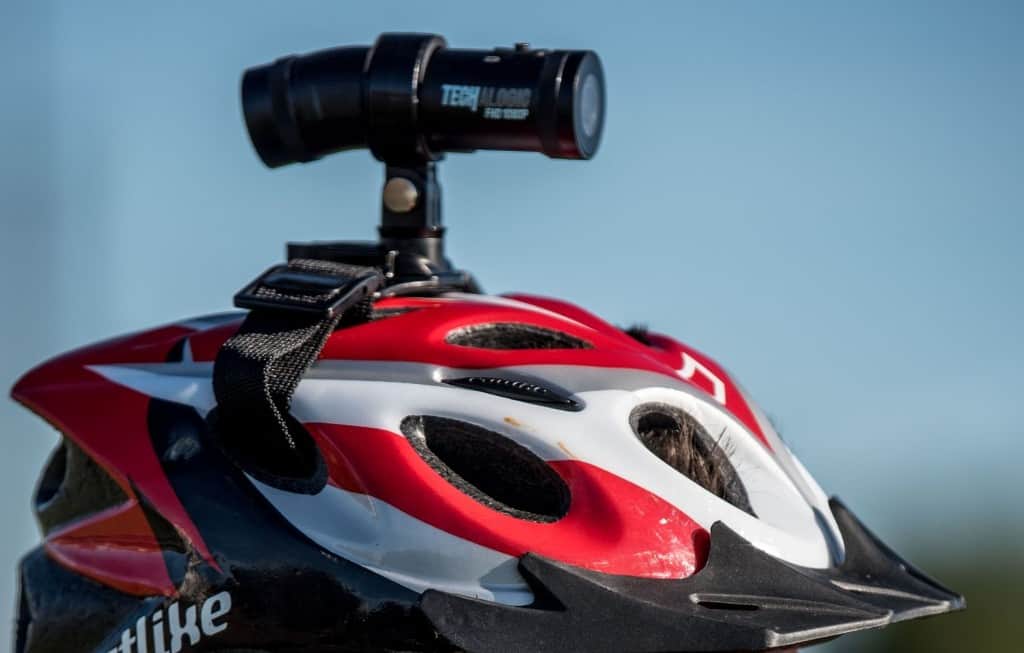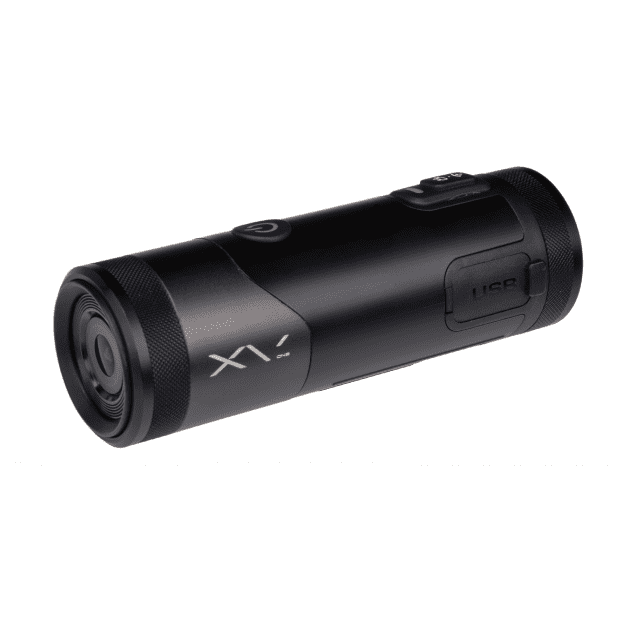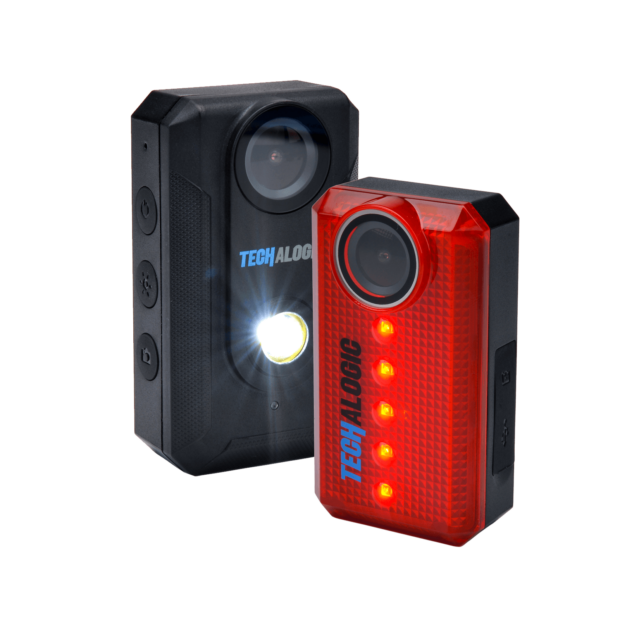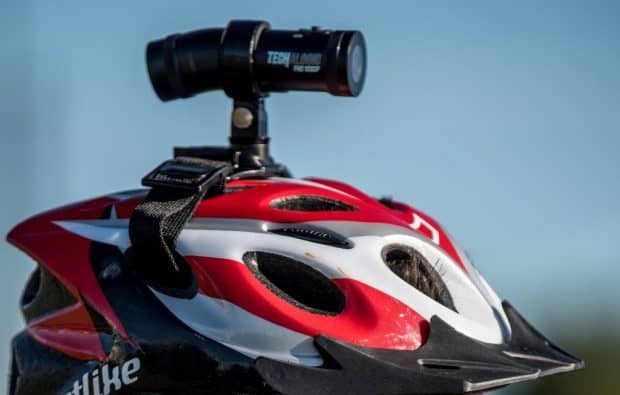Bicycle cameras were originally sold as accessories for recreational riders, giving them the opportunity to edit and create films of their journeys. It soon become apparent that they were useful for recording collisions, as cyclists began posting near-misses and other dangerous driving on video-sharing websites like YouTube.
The roads can be dangerous places for cyclists, who are particularly vulnerable to injury. In 2014, 21,287 cyclists were injured in reported road accidents, with 3,514 of these killed or seriously injured. Conventional methods enforcing road safety aren’t working, which is why many people have taken matters into their own hands and began using cycling safety cameras and other safety action cameras, such as Techalogic’s DC-1 dual lens helmet camera, CF-1 Front light with integrated full HD 1080p wide angle camera, and XV-1 2k QHD helmet camera. This blog will uncover what a cycling safety camera is, what makes a good one, where to install them, and what advantages you may expect from using one.
What are cycling safety cameras?
Sometimes referred to as action cameras, helmet cameras, or adventure cameras – our bicycle cameras are small and incredibly designed cameras that can capture HD footage, without weighing you down or feeling clumsy.
There is another dimension to owning a bike camera, which is that they serve a purpose for capturing evidence when a bike ride goes wrong. Much like a dash-cam, these cameras will allow you concrete evidence, should you ever require it. Bikers are increasingly vulnerable, with fatalities increasing by 5% and serious injuries by 26% since 2004. Almost half of pedal cycle fatalities (46%) involved a car, with 2 cyclists, and 83 seriously injured per week from 2015 – 2020. As a result of this, cyclist’s have begun to adopt cycling cameras as a means of boosting their own safety, and to encourage better behaviour from other drivers.
Where to install
There is great debate among current users with regards to the ‘best’ place to install your action camera. Given their small size, there are a variety of different places to mount your bicycle camera, each with unique benefits. These are explained below:
Helmet Mount
Using a cycle head camera / helmet mount is the most common way in which cyclists choose to mount their camera. Likely a result of the flexibility that this option provides, as you can use the same helmet no matter what bike you’re riding.
Using a cycle head camera position can be beneficial, the camera always sees what you yourself are seeing, as it points in the direction that your head is pointed.
This isn’t the most reliable method for picking up license plates on your footage, as your head can bob a bit while pedalling. That being said, it is the best method at identifying a driver, as you can turn your head alongside a car to see who’s inside.
It is better to avoid using cameras with extended batteries, as the extra weight may make your helmet feel unstable and uncomfortable and may even cause the helmet to shift into a compromising position if you were to have a crash. It is much more highly advised that you try our XV-1 2K QHD helmet camera, as it has been purpose built in order to maximise utility and comfortability.
Handlebar Mount – Front
Mounting on the handlebars makes it easy to get the camera out of the way and frees you from the weight of a camera at the top of your head.
Front-facing bicycle cameras can either be mounted above the handlebars, or below the handlebars. The main deciding factor differentiating the two is whether you have other things to mount onto your handlebars.
Placing your bicycle camera below the bars makes sure the camera is out of the way of your lights, GPS unit, smartphone mount, or anything else you may mount on your handlebars.
Having a camera on the handlebars will make identifying a license plate fairly reliable, as they are much steadier than a head-mounted camera. Identifying drivers is unlikely though, as the cameras are generally too low to see inside a car. Mounting a camera on the handlebars also makes the extra weight of extended life batteries a non-issue.
If a front facing camera is something you are looking for, then check out our CF-1 front light with integrated full HD 1080p wide-angled camera.
Handlebar Mount – Rear
An alternative method of mounting the camera on the handlebars, is to use a rear-facing camera. The rear facing camera is normally mounted onto the shaft of the bike seat. A bicycle rear camera mounting position is often preferred to the front facing position, as it gives the best perspective of how close a passing car may get to you.
It is just as reliable at reading front license plates as a front-facing handlebar mount; however, they can be susceptible to windshield glare. For more information about our CR1 camera, read our blog here. The blog covers everything you need to know about the CF/CR1 camera.
As expected, there are a number of factors to consider when deciding on the best bicycle camera to employ, with some seeming more appropriate for recording your daily commutes than others. The following checklist has been created to ensure that you are purchasing a camera that serves its purpose effectively. The checklist is as follows:
- Waterproof
- Long battery life
- Infinite recording capacity
- Always on
- Time and date stamps
- High quality image
- Wide angled lens field of view
- Frame rate
- Sound recording
Advantages of using cycling safety cameras
Riding with our cameras on your bicycle is helpful for many reasons, and necessary for your protection. Here we’ll advise on the benefits of having cameras when you’re riding your bike.
Accident evidence
The majority of bicycle injury law cases are ‘’my word vs yours’’, making it challenging to prove who was more at fault in the incident. A victim can largely improve the validity and strength of their argument if video footage is present. It is powerful for a judge and/or jury to see and hear the incident with their own eyes.
Deter bike bullies
More than simply providing proof in a court case, having action cameras present on your bike can cause the drivers around you to think twice before acting. While not all drivers will notice the cameras – those that do are more likely to follow the law, as you will have proof of any offenses. Therefore, a bicycle camera is a preventative measure you are able to take in aid of protecting yourself.
Spread awareness
The third benefit of a bicycle camera is that you can spread your footage onto social media as a means of raising awareness to the issues you face while cycling. In doing so, you can help more people to understand what it is like to be a cyclist when drivers get too close or drive too fast.
Capture awesome footage
If nothing else, then a bicycle camera can help you to capture unbelievably beautiful footage of rides that you can savor later on.
———
Bicycle cameras have numerous advantages, they can: help provide evidence in the occasion of road accidents, help to deter bike bullies, help to spread awareness, and help to capture awesome footage.
As highlighted above, there are three main places that users install the action cameras to: the helmet, the handlebar facing forwards, or the handlebar facing backwards.
When buying a Techalogic camera, you are ensuring that you have fulfilled all factors up for consideration, such as making sure that it is: waterproof, has a long battery life, infinite recording capacity, is always on, has time and date stamps, records in high quality, has a wide-angled lens, a fast frame rate, and sound recording capabilities.
Here at Techalogic, we have an assortment of bicycle cameras for you to choose from, that fulfill all of the above quality factors. To browse the options we have available, make sure to check out our website, or contact us directly to find out more.




